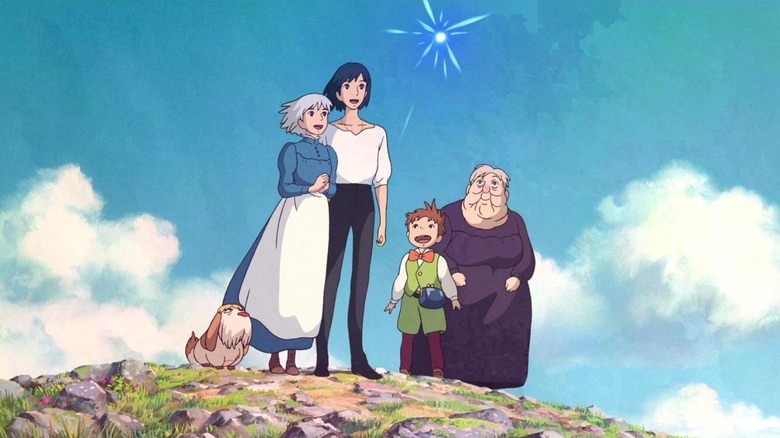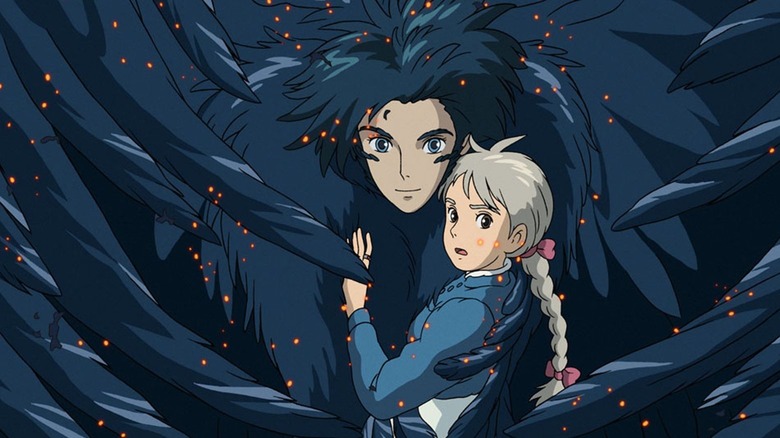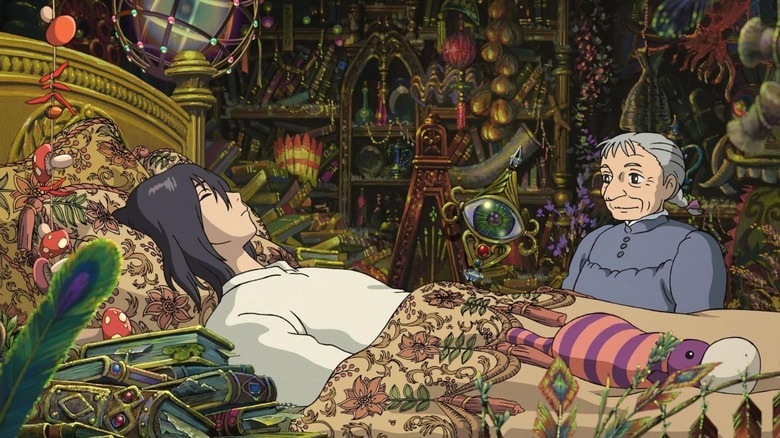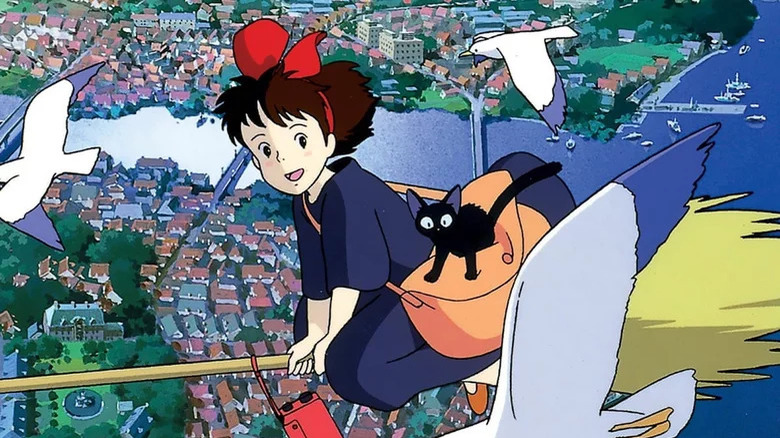The Process Disney Used To Translate Studio Ghibli To English
Academy award-winning South Korean filmmaker Bong Joon-ho rightly said, "Once you overcome the 1-inch-tall barrier of subtitles, you will be introduced to so many more amazing films." In a perfect world, his suggestion would stand true for all movies, animated and live-action.
With foreign language films, there's always been the question of authenticity vs. ease of watching. Do you watch a film in its original language with subtitles, or do you watch a dub? For Japanese animation veterans, Studio Ghibli, who began a partnership with Disney in the late 1990s ahead of the release of "Princess Mononoke," the answer is simple. They choose to work with voice actors and screenwriters who can work towards translating Japanese to English in a genuine, conversational way that maintains the essence of the original.
The biggest challenge is getting the dialogue to sound natural
Don and Cindy Hewitt wrote the English screenplay adaptations for four of Studio Ghibli's most famous films: the Oscar-winning "Spirited Away," "Howl's Moving Castle," "My Neighbor Totoro," as well as "Whisper of the Heart." Their job was to make the original Japanese sound just as nuanced and conversational in English, which can be a real challenge sometimes.
The translation team at Disney explained the process they use to translate Studio Ghibli's most noteworthy movies in the "Behind the Microphone" extra in the DVD for "Howl's Moving Castle." Rick Dempsey, the co-director/co-producer for the film, shared that at Disney, the team tries "to do a great artistic job to ensure that the audience is identified with the film and feel like this could've been a film created in America."
Co-producer Net Lott added that the first step of the translation process is to look at the film in Japanese and understand the words and how Hayao Miyazaki directed the characters. The film's co-director Peet Docter credited live-action screenwriters Don and Cindy Hewitt with making the language conversational "and real and truthful and yet maintaining the integrity, the meaning of the original."
Translation can be tricky
Translating and dubbing animated movies isn't an easy task — especially with Studio Ghibli films. You can't straight-up translate Japanese to English; the language needs to be carefully crafted into a screenplay that reflects Miyazaki's vision and matches the characters' mouth movements.
For screenwriters Don and Cindy Hewitt, the biggest challenge was to get the dialogue to "sound natural." For "Howl's Moving Castle," the pair worked with actors such as Christian Bale for the American dub, constantly working through each dialogue and altering them to enhance the outcome.
"Getting the dialogue to sound natural is really the biggest challenge for us. Sometimes the sentence is so much longer in Japanese and sometimes it's so short. The actors have been amazing, being able to deliver the lines within the little fixed areas where you have to still get all the emotions and subtleties of the character."
How Disney used dub localization
The partnership between Disney and Studio Ghibli exposed Miyazaki's films to millions of fans up until 2017, when GKIDS, a New York-based distributor of award-winning animation features, took over the distribution rights.
Crafting a successful dub requires more than just a literal translation. It is necessary to bridge the gap between the two languages — an American audience is unlikely to understand the cultural vernacular used and understood by a Japanese audience. For this reason, Disney is known to have used localization as a means to cater to its target audience. Studio Ghibli was never a fan of this process — especially when Disney went back on their contract and altered their movies, adding extensive changes to "Kiki's Delivery Service" (1989), revealed longtime Studio Ghibli executive Steve Alpert (via Cartoon Brew). Disney added music, sound effects, and new dialogue despite the contractual agreement stating that substantial changes to the film were not permitted to be made.
Despite not adhering to the rules, Disney's dubs of Studio Ghibli films feature top-tier talent, and the studio's efforts to capture Miyazaki's vision and yet provide a comprehensible storytelling experience for American audiences reflects through its voice cast. Subtitles, however, will always be more accessible and useful in terms of delivering the nuance intended by the story, but at the end of the day, it's about your personal preference.



